List of author's articles
Against the flood - Sedan 13th of May, 1940

Assalto! British Blitzkrieg
In the summer of 1940, Italian dictator Benito Mussolini watched with growing dissatisfaction the inaction of Italian troops stationed in Libya. After the death of Marshal Italo Balbo (killed in a S.79 bomber, accidentally shot down by Italian anti-aircraft artillery near Tobruk on June 28), Marshal Rodolfo Graziani became the new Commander-in-Chief of the Armed Forces in North Africa. He tried to gather the necessary forces for the offensive required by Rome against Egypt. Finally, under threat of appeal, he reluctantly launched an attack on September 13, 1940.

Assalto! Italian assault air force
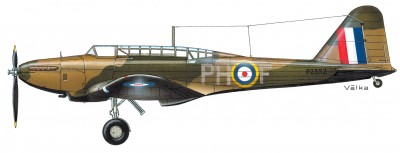
Battles over Sedan
The actual day of judgment came for the crews of Fairey Battle light bombers from the Advanced Air Assault Army (AASF) on May 14, 1940. British pilots in obsolete aircraft and without proper security with their own fighters were uncompromisingly thrown directly into the epicenter of the ongoing battle, the Sedan area. The result was one of the largest massacres of RAF bombers during World War II.
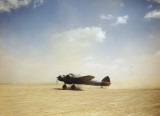
Beaufighters and Operation Crusader - part 1
The operational activities of Beaufighters outside the Home islands are thus somewhat out of the interest of aviation historians and the general reading public. That this is not entirely justified is shown, for example, by the deployment of the 272nd RAF Squadron during Operation Crusader on the North African desert battlefield (Western Desert Air Force) in November and December 1941.

Beaufighters and Operation Crusader - part 2
November 19, 1941. The second day of Operation Crusader , an Allied offensive on the North African battlefield aimed at releasing besieged Tobruk. At the murmur of powerful engines, four Beaufighters Mk.Ic of the 272nd Squadron of the RAF took off from the LG.10 Gerawla field base in the morning at 6.40 am. The weather was unfavorable, as few would have imagined when saying the word "desert."

Blackburn Skua (1)

Blackburn Skua (2)

Buffalo Mk.I versus Zero
The American fighter Buffalo has become a real synonym for failure in the history of air battles in World War II. The characteristically shaped monoplane was developed by Brewster as an onboard aircraft for the US Navy. The only clearly successful deployment was the service of the Model 239 version in the ranks of the Finnish Air Force. In the British RAF, which together with the USN was one of its largest users, it completely failed.

Buffalo of the British Naval Air Force 1
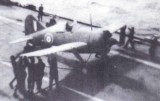
Buffalo of the British Naval Air Force 2

Descendants of the Aztecs against the U-Boots
The half-forgotten episodes of World War II include the actions of the Mexican Air Force against the German U-Boots. As part of the Fuerza Aérea Mexicana, the originally training North American AT-6 Texan training aircraft took part in the anti-submarine campaign.

Embarrassed entrée - combat baptism of Bomber Command RAF
3 min. after noon on 3 September 1939, at a moment when the state of war between the United Kingdom and Germany lasted only an hour, took off from the airfield at Wyton Blenheim Mk.IV serial number N6215 from the state 139. Sq. RAF. The aircraft, piloted by F/O A. M. McPherson, was given a truly historic role - to make the first RAF combat flight over enemy territory in the new war. Instructions instructed the crew to reconnoitre Wilhelmshaven and airfields in north-west Germany.

Falca in the service of the Luftwaffe
On the night of March 11-12, 1944, five German pilot-operated Fiat CR.42LW biplanes from the Nachtschlachtgruppe 9 took off to attack Allied positions on the Italian front. More than three years after the night fighters Arado Ar 68 disappeared from the first-line armament of the Luftwaffe, the German Air Force began to use fighter biplanes again in combat. Of course, no longer in their original fighter role, but for night battles.

Fighters and the Abyssinian crisis

First Liberators of His Majesty - Part 1

First Liberators of His Majesty - Part 2
Forgotten warriors of the famous battle

French bombers over Sedan
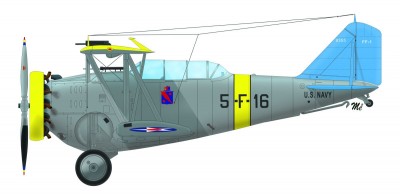
Grumman FF-1, SF-1 and GE-23 Dolphin - part 1
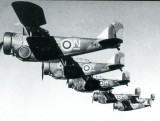
Grumman FF-1, SF-1 and GE-23 Dolphin - part 2

Gulls against the "Spitfire"

Heinkel biplane fighters in the USSR

In the Spanish sky - Avia BH-33

In the Spanish sky - Bellanca 28-70 and 28-90

In the Spanish sky - Blériot-SPAD S 51 and S 91
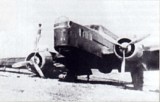
In the Spanish sky - Bloch MB 210

In the Spanish sky - Breguet 460 M5 Vultur

In the Spanish sky - Bristol Bulldog II

In the Spanish sky - Dewoitine D.371

In the Spanish sky - Dornier Do 17

In the Spanish sky - Douglas DC-2
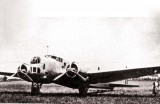
In the Spanish sky - Fiat BR.20 Cicogna
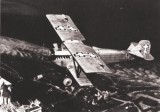
In the Spanish sky - Fiat CR.20
In the Spanish sky - Hawker Spanish Fury

In the Spanish sky - Heinkel He 111 B

In the Spanish sky - Heinkel He 112 B

In the Spanish sky - Heinkel He 112 V6 and V9

In the Spanish sky - Heinkel He 51

In the Spanish sky - Henschel Hs 123 A
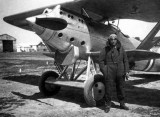
In the Spanish sky - Hispano-Nieuport 52

In the Spanish sky - IMAM Ro.41

In the Spanish sky - Junkers Ju 86 D-1

In the Spanish sky - Letov Sh-231
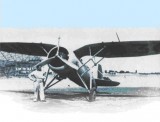
In the Spanish sky - Loire 46

In the Spanish sky - Martinsyde F.4 Buzzard - Fighter who missed the Great War
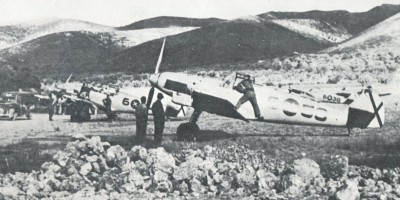
In the Spanish sky - Messerschmitt Bf 109 C
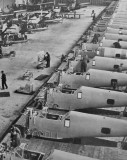
In the Spanish sky - Messerschmitt Bf 109 E
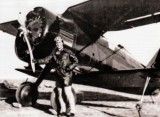
In the Spanish sky - Polikarpov I-15

In the Spanish sky - Polikarpov I-15bis

In the Spanish sky - Polikarpov I-16 type 5

In the Spanish sky - Polikarpov I-16 type 5 and type 6
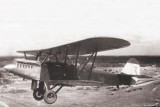
In the Spanish sky - Polikarpov R-5 Rasante

In the Spanish sky - Polikarpov R-Z Natacha

In the Spanish sky - Polikarpov UTI-4

In the Spanish sky - Potez 25
In the Spanish sky - PWS-10

In the Spanish sky - SIAI Savoia Marchetti S.79 Sparviero

In the Spanish sky - SIAI Savoia-Marchetti S.81 Pipistrello

In the Spanish sky - Vultee V-1A

Incident in Krosno, April 15, 1941

Italian attack planes over the sea of sand
In June 1940, the Italian Air Force was in serious crisis. This is best seen in the units serving in North Africa within the Comando Aeronautica Libia ( Libya Air Command - since July 4 it was redesignated the 5th and Squadra Aerea or "5th Air Force" ).

Junck's special commando
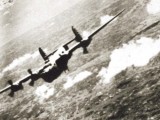
Liberators for the Chinese battlefield
On 4 May 1943, the 14. AF to that time the largest offensive action of the USAAF on the Chinese battlefield. Thirty bombers and 24 P-40 fighters took off from airfields in Chenggung, Yenkai, and Kunming in the morning.
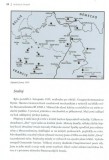
Man against man, machine against machine

Messerschmit Bf 109 E vs. Fokker D.XXI
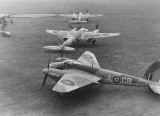
Mosquitos vs Gestapo
British de Havilland DH 98 Mosquito aircraft became actors in a number of special aviation events during World War II. Operation Jericho - ie the attack on the German prison in Amiens, France, on February 18, 1944 - became the most widely known, as is another article in this MR special. However, it did not remain an isolated shot. The RAF Mosquitos carried out a series of similar actions aimed at helping the resistance in the occupied countries. Some of them were aimed specifically at the dreaded Nazi secret state police.

Naval airmen of His Majesty against the Blitzkrieg (1. part)

Naval airmen of His Majesty against the Blitzkrieg (2. part)

Naval airmen of His Majesty against the Blitzkrieg (3. part)

Operation Meridian I

Operation Meridian II

Paris-London line

Predators of the night sky
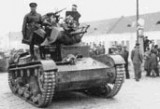
Red shadows of the Estonian sky
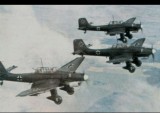
Sedan May 13, 1940
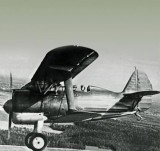
Stalin's "Dexterous Biplanes" - I-15bis above Chalchyn Gol

Stalin's bombers are attacking - the first day of the Winter war
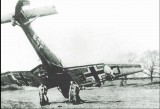
Stuka Hunters
During the first 24 hours of operation Overlord (from 21.00 5. June 1944 to 6. June), the Normandy landings, the aircraft of the USAAF and the RAF made a total of 25.275 sorties, of which 15 004 accounted for the direct support of the ongoing invasion. Only thing the all-powerful Luftwaffe was able to do during the first 24 hours of the landing was only 319 sorties carried out by aircraft of Luftflotte 3. In addition, only a smaller part of them was directed directly over the invasion beaches.

The Emperor's Air Force

The French from British airports

The Horten Brothers - Part 1
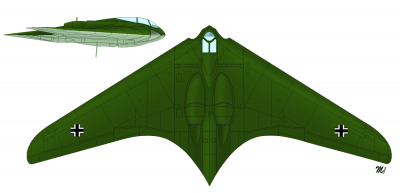
The Horten Brothers - Part 2

The pursuit of the steamer Watussi
The South African Air Force (SAAF) was a numerically small force at the start of World War II, mostly armed with obsolete aircraft. It gained its military spurs symbolically in the pursuit of the German steamer Watussi in December 1939.

The shadow of a bomber over the Winter War

Thundebolt Pilo Col. Neel Kearby

Tomahawks over Moscow
In mid-September 1941, members of the 126th IAP appeared at Kadnikov Airport. The base was located 140 km from the city of Vologda, near the railway line connecting this agglomeration with the port of Arkhangelsk. At the airport, pilots from the 126th IAP were awaited by, for the Soviets at that time, very unusual aircraft: American fighters Curtiss Tomahawk. They were provided by the new allies of Stalin's Soviet Union - the British. A special-purpose alliance was formed less than three months ago, after the German attack on the USSR. Fighter jets perched around the airport's runway were one of its first practical implications.
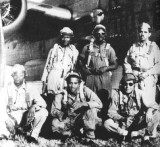
Tuskegee Airmen
At the end of World War II, black members of the United States Armed Forces could be found on every battlefield. About half a million served overseas during the war. However, only a small group of them were allowed to be among the real elite of the American armed forces of the time, among the pilots. Thanks to this, they also received the most attention among black American soldiers of World War II. According to the place where they underwent flight training in the USA, they were nicknamed "Tuskegee Air men" ( Tuskegee pilots ). And the top among them were fighter pilots from the 332nd Fighter Group.

Two combats of carrier-based fighters of His Majesty

USAAF Thunderbolts over Burma
Join us
We believe that there are people with different interests and experiences who could contribute their knowledge and ideas. If you love military history and have experience in historical research, writing articles, editing text, moderating, creating images, graphics or videos, or simply have a desire to contribute to our unique system, you can join us and help us create content that will be interesting and beneficial to other readers.
Find out more